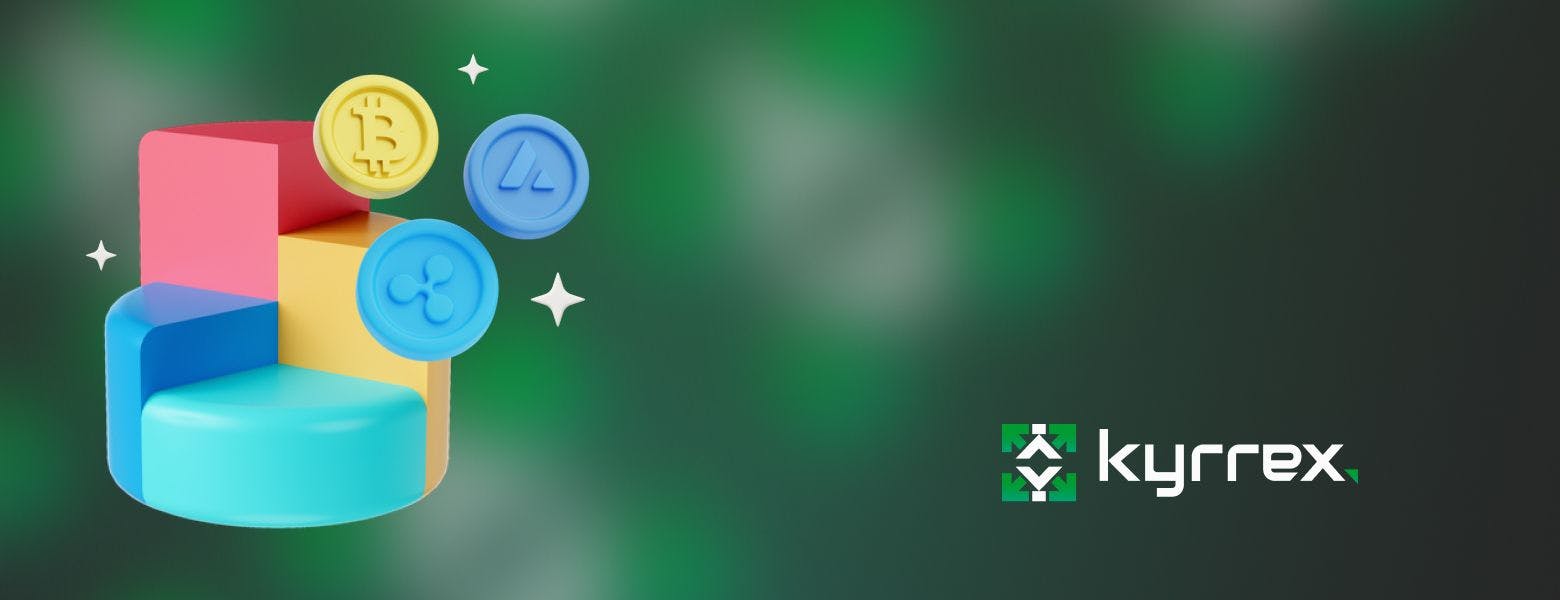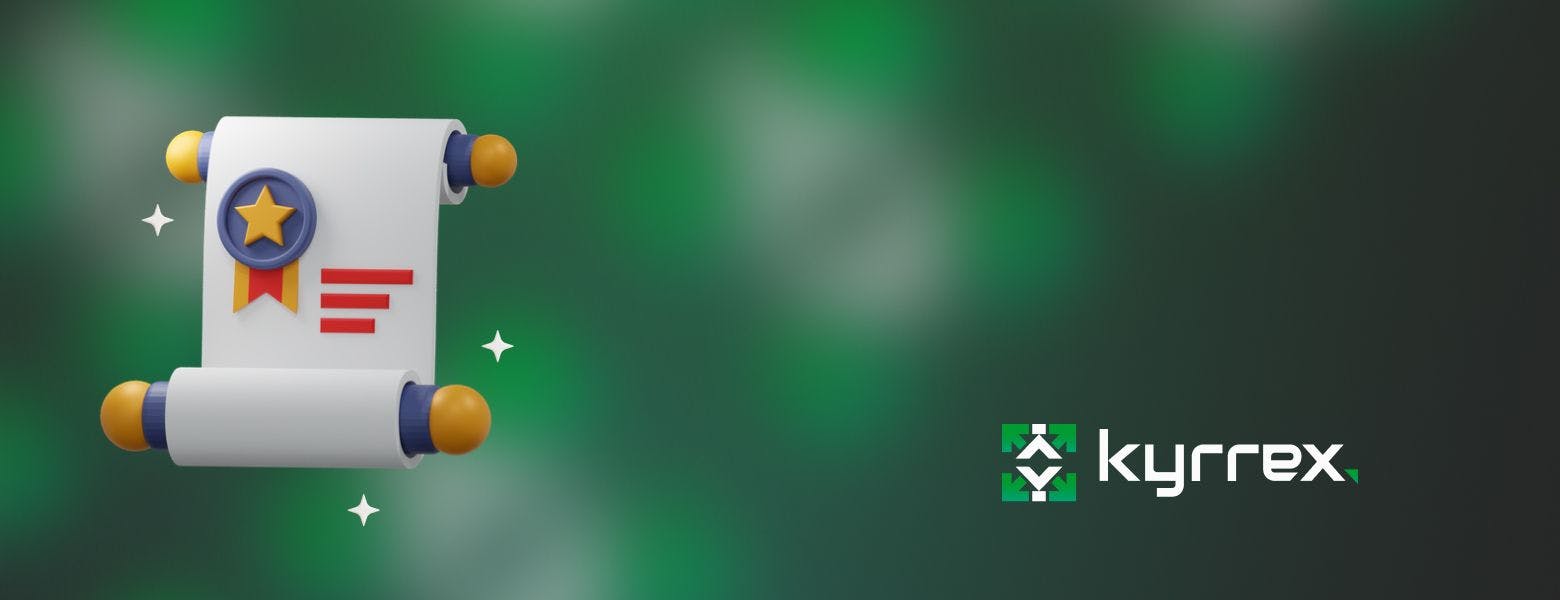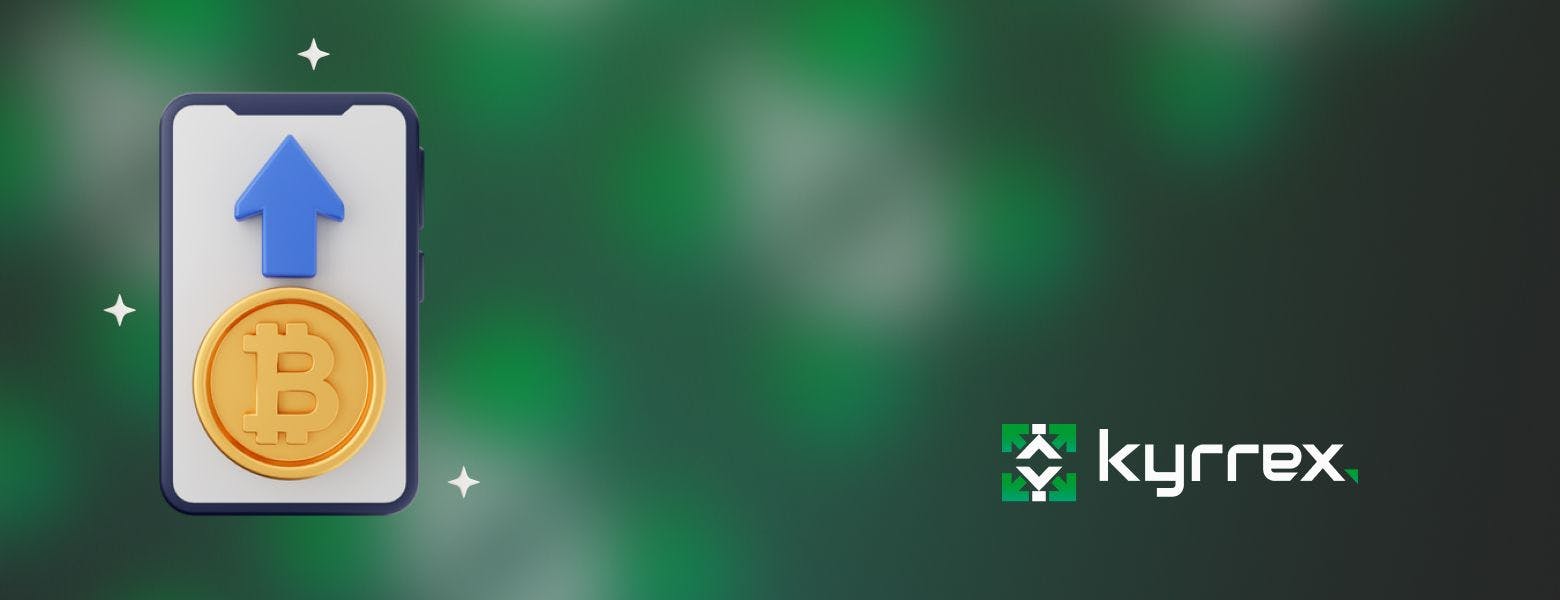
Best Way to Set Up, Manage and Organize Your Crypto Portfolio

Starting with Bitcoin, cryptocurrencies have made many people rich and it is normal to want in on the action. However, investing in crypto is like riding a tiger so you need to create a well-balanced crypto portfolio built on prudent allocation and diversification.
This guide discusses the things to consider when creating a portfolio of digital tokens. By studying the factors that should influence your choices, you can put yourself in the best position to benefit from the current crypto boom.
What Is a Crypto Portfolio?
A typical portfolio consists of financial investments like bonds, equity, treasury bills and ETF instruments. It's a collection of investments spread across different asset classes. A crypto portfolio, on the other hand, consists of just one asset class—cryptocurrencies.
Within this asset class, however, are different types of cryptocurrencies, and the goal is to spread investments in a way that optimizes overall gains and minimizes the impact of a single failed investment.
A typical crypto holding can consist of Bitcoin, established altcoins like Ethereum, emerging coins like Solana, new coins like Kyrrex (KRRX) and speculative tokens from an ICO or IDO, and financial crypto products like options or leveraged tokens.
What Should My Crypto Portfolio Look Like?

The best crypto portfolio allocation is a matter of both perspective and debate. Some rely on concentrating their holdings among a small number of popular, well-backed coins. Others prefer spreading risk among a larger basket of coins to maximize opportunities.
Ultimately, each investor's choice should reflect their broader aims in the cryptocurrency market. Those in it for the long haul might consider a bigger portfolio. Casual traders may eye a few trending coins for short-term gains.
When creating a diversified cryptocurrency portfolio, a few ground rules should be observed.
1. Spread your Investments Among Different Risk Levels
Higher risks can mean higher rewards. It can also mean bigger losses; so, spread your risk accordingly. Identify high, medium and low-risk coins and spread your investment appropriately.
In general, you should go for investments that promise steady gains even if it takes a little longer to materialize. Don't focus too much on pump-and-dump coins or FOMO just because others are doing so.
2. Always, Always Hold Some Stablecoins
Stablecoins can be your get-out-of-jail card so try to have some at all times. You can quickly exploit an uptrend or convert it to fiat in an emergency. Stablecoins are also your gateway to many platforms on different chains because of their "agnostic" nature.
When you make gains, practise converting some, if not all, your initial principal to a stablecoin to protect yourself from a sudden dip.
3. Be Flexible
Go into crypto investment with a good plan but don't be afraid to switch things up as the things evolve. The market may not play to your expectations, adjust your portfolio spread to cope with the situation.
4. Be Cold-blooded About Your Investments
Excess greed can cause investors to lose all their money. After making some gains, convert a portion to a stablecoin or take it out of crypto altogether. Set realistic targets and be pragmatic about unexpected windfalls.
Avoid revenge trading as well. If you lose lots of money to a tanking coin, don't try to win your money back immediately. Be rational about things. Analyse the token and move on if its long-term indicators don't favour you.
5. DYOR
Do your own research. If a coin intrigues you, go undercover. Who are its promoters? How has it done so far? What is its max supply and tokenomics? What uses does it have?
Don't just buy into hype or rumour; find the substance. Crypto analysts aren't infallible so you should complement their enthusiastic declarations with your own research.
6. Invest Responsibly
The crypto space has more tales of woe than triumphs of joy to share. It's the wild west out there so only put in what won't break you financially.
From the start, decide what proportion of your finances to invest in this sector and stick to your decision. Sometimes, you may feel like putting in more money to take advantage of new opportunities. Those occasions should be rare. Instead, focus on enlarging your portfolio by redistributing gains.
How to Diversify Crypto Portfolio

There are different ways to diversify your crypto holdings and spread risk. You can invest in different tokens, add crypto derivatives to your portfolio, or buy into a crypto fund.
Buying Different Coins
In general, you can profit by investing in strong-performing coins across various blockchains and utilities.
Payment Coins
Payment coins are the big daddies of the crypto sphere. The original aim of cryptocurrency is to transfer value while bypassing centralized regulation. The initial rush of coins that followed BTC had the same purpose.
These days, most of them are less well-known than before. While several have faded from the scene, a few still primarily deal with payments.
Apart from Bitcoin itself, coins like Litecoin (LTC) and Bitcoin Cash (BCH) remain good investment vehicles. Perhaps the most popular of the non-BTC payment coins is XRP, from Ripple.
Payment coins maintained their appeal from the first generation into the current crypto boom. They represent flexibility of use: you can either hold them long-term or use them to make payments.
Stable Coins
Stable coins or stablecoins are an important type of cryptocurrency that should be in everyone's portfolio. A stable coin is pegged to the value of an underlying asset. In most cases, this asset is a globally-regarded currency like the US dollar. A stable coin can also track the value of a rare asset like gold.
Most familiar stablecoins use the USD as the underlying asset. The coin rises as the dollar rises and falls as it falls. Stablecoins enable investors to quickly switch from a volatile cryptocurrency.
Holding a stablecoin also enables you to quickly take advantage of market situations instead of wasting time converting fiat. Outside BTC, most crypto coins have a stablecoin as one of the trading pairs; hence there's no need to convert to something else before making a purchase.
With a stable coin, you're not looking to reap gains in the asset's value but get stability. However, the type of stablecoin you have should be related to the platforms you transact on. Some platforms support certain stablecoins but not others.
Examples of stablecoins are:
- Tether USD (USDT)
- Pax USD (USDP) formerly Paxos Standard
- Coinbase USD (USDC)
- Binance USD (BUSD)
- True USD (TUSD)
You can buy and trade stable coins on Kyrrex crypto platform.
Blockchain Coins
A blockchain coin is a cryptocurrency that serves as the native token of a blockchain. A blockchain is the underlying technology that allows coins to be bought and sold anonymously. Each blockchain has a record of every transaction made on the network.
A blockchain coin is used to make payments for transactions conducted on the network. People who verify and approve exchanges made on the Ethereum network are paid in Ether, for example. Popular blockchain coins generally see their value skyrocket as the underlying network gets more traffic. Hence, they have become a popular instrument for crypto investors.
This type of crypto coin is among the safest when thinking about your crypto portfolio allocation. Blockchains are massive ventures that involve lots of commitment and resources, especially from institutional investors.
Some popular blockchain coins beside Bitcoin and Ethereum are:
- Cardano (ADA)
- Solana (SOL)
- PolkaDot (DOT)
- Terra (LUNA)
- Algorand (ALGO)
Security Coins
Security tokens are best thought of as coins pegged to the value of a traditional security on the stock exchange. They behave like stocks in many ways and are subject to the same regulations.
Any platform that offers a security token has to first get the permission of the local regulators. It is illegal to offer a collateralized security product otherwise.
A security token can represent shares in a company, bonds from a project, or rights to vote. They're a convenient way for individuals to acquire equity without going through stockbrokers.
Utility Coins
Utility tokens act as the gateway to a product or service. In that general sense, blockchain coins are also utility tokens since you need them to pay gas fees when using the relevant network.
In a narrower sense, an utility token provides access to the issuing platform's services. Many exchanges have a token that can be used to pay transaction fees. If you make use of a platform regularly, holding its utility token is probably a good idea. You'll get to enjoy discounted trading, higher interests, and other perks.
Examples of utility coins are:
- Decentralized Exchanges. CAKE, a token on the BSC network that is used to incentivize users to provide liquidity on PancakeSwap, an AMN token-swapping platform.
- Exchanges. KRRX, a TRC20 token issued by the Kyrrex Exchange, a centralized cryptocurrency trading and digital banking platform. Kyrrex token holders get trading commissions, higher staking rewards and sundry other benefits of using the platform.
- Launchpads. CARDS, an ERC20 token that grants holders access to initial coin offerings on CardStarter, a launchpad and accelerator for Cardano projects.
Governance Coins
Governance coins generally overlap with utility tokens and blockchain cryptocurrencies. Some platform tokens have governance as one of the benefits for holders.
For a governance token, anyone holding a certain number of the tokens gets to have a say when changes are being made. For example, ETH holders can debate and formulate proposed changes under Ethereum Involvement Proposals or EIPs.
Meme Coins
A meme coin is linked to a theme or joke rather than a serious use case. A meme coin holds no intrinsic value but is created for fun.
That said, some meme coins, especially Dogecoin (DOGE) and Shiba Inu (SHIB), have turned out lucrative for speculators who got in at the right time.
Crypto Derivatives

Crypto coins are just one side of the equation when you want to make a crypto portfolio. The other side is investing in crypto derivatives and other financial products linked to the crypto market.
When holding crypto coins the traditional way, your profit or loss is tied to whether the coin rises or falls. With crypto derivatives, you don't need to actually hold the underlying asset to benefit. However, trading derivatives is a bit more complex than traditional spot trading.
Futures
In crypto futures, you simply bet that the value of the underlying asset will go in a certain direction. If your bet is correct when the duration specified in the futures contract is over, you make a profit. If you guessed wrongly, you make a loss.
Futures products are offered in many popular exchanges. There are weekly, monthly, quarterly etc. contracts. If you believe the price of the asset will go up by the expiration date, you long the contract, and if you believe it will go down, you short it.
Options
Options contracts give you the right to buy or sell the underlying asset at a specific price in the future, regardless of the actual price in the future.
A call option gives you the right to sell the contract and a pull option gives you the right to buy it. Either scenario is optional as you can choose not to exercise the right you've acquired. However, if you don't exercise your right, you will forfeit the premium paid to acquire the options contract.
Both futures and options contracts can be perpetual. This means that there is no expiration date and the trader can hold these contracts as long as they like, subject to leverage, margin and liquidation constraints.
If you trade derivatives, they will be the riskier parts of your crypto portfolio because of their unique constraints. Hence, do your own research and make sure you're knowledgeable about coin and market trends.
ETFs
An exchange traded fund or ETF is an investment scheme that mimics the value of an asset or group of assets. With respect to crypto, an ETF tracks the price of the underlying coin or group of cryptocurrencies.
Due to regulation, there aren't many crypto ETFs around but that is slowly changing. Investing in a Bitcoin ETF lets you hold the world's biggest cryptocurrency without dealing with an exchange or any complicated security or regulatory steps. Via the ETF offering, you simply hold a share of BTC and can buy and sell it on the stock exchange like you would a regular stock or bond.
Yields
Another way to diversify your crypto platform is by investing the coins you hold in products that generate yields. These avenues include farming, staking, lending and providing liquidity
There's a wide variety of yielding products for different coins, on different platforms, and with different yields. Some pay interest in more of the token, some in a stablecoin, and some in another digital token.
How to Set Up a Cryptocurrency Portfolio

Now that you know the dos and don'ts of creating a cryptocurrency portfolio, you can go ahead and set one up with confidence. Whether you're aiming for the best diversified crypto portfolio or just want to hold one or two coins, the following steps will aid you in that task.
Obviously, you can't just stroll to your bank or local brokerage to buy crypto. Most banks don't seem interested right now and the law wouldn't allow it anyway.
But, we assume you're ready to take the plunge. Then, read on.
Decide How Much to Invest
Bitcoin and popular alts have been rising recently so it can be difficult to keep your enthusiasm in check when deciding how much to invest. But, decide you must.
As stated earlier, use only a small percentage of your overall investment funds in cryptocurrencies. If you let greed influence you too much you'll have to deal with an equivalent dose of fear.
Choose a small amount, say 10-15% to make a crypto portfolio and stick to that.
Choose your Coins
Bitcoin is the king of crypto but that doesn't mean you shouldn't cast a wider net. Study the different types of investment options explained earlier and decide how much to allocate to each crypto type you choose.
The best crypto portfolio allocation involves coins across different blockchains and movement types. Some coins move along with Bitcoin so adding only those to your portfolio doesn't make sense.
Choosing different coins with different movement trajectories allows you to spread risk more effectively. If some of your holdings disappoint, others will be there to lessen the pain with their own gains.
All in all, consider the following when assessing what crypto coins should make up your initial portfolio:
- market cap
- utility
- technology
- target market
- team and its leaders
- funding and investors
- your risk tolerance level
These indicators will help you create a balanced crypto portfolio template. Remember that you can start with just a few tokens and slowly enlarge your portfolio as your risk appetite grows bigger.
Buy Your Coins
After deciding your crypto portfolio allocation, the next step is to buy the tokens. This step is what discourages many individuals from buying cryptocurrencies. Most people are used to buying financial products the traditional way so having to do things personally is a turn off.
Until there's more mainstream penetration or governments relax the rules on crypto trading, you'll have to make do with buying crypto yourself on a centralized or decentralized exchange.
A centralized exchange like Coinbase, Huobi or Kyrrex won't let you trade crypto if you don't tell them who you are. Although you lose some anonymity, you gain a level of security and confidence that just isn't there if you use an anonymous exchange or P2P platform. These exchanges provide a wide variety of coins to choose from and custodial wallets to hold them in. They are closely watched by regulators so you can be assured your funds are safe.
Unfortunately, an exchange might not have a specific token you seek. This is where decentralized exchanges come in. These platforms let you buy a token for which there is liquidity. Also known as swapping apps, you can exchange various tokens on the same blockchain. For example, Uniswap supports ERC20 token swaps while Raydium performs the same role for Solana SPL tokens.
You can also use P2P exchanges like eToro or Paxful to directly buy crypto from another user.
If you're more into secondary crypto investments then a derivative-focused platform like FTX or Dydx Exchange will be right up your alley.
Of course, there are even more ways to invest in cryptocurrency out there. If you want to put your money in with as little risk as possible you can give it to an ETF to manage on your behalf. Crypto brokerages like Greyscale and ProShares offer various products, mostly based on Bitcoin.
Store Your Coins
Just like you need a bank account to hold traditional currency, keeping crypto tokens yourself requires a wallet. A wallet on a blockchain does exactly what a bank account does, but with crypto. Except that it does much more than that.
An important part of how to diversify crypto portfolio is thinking about the right storage for your coins. This decision cannot be made in isolation.
It's important to know where your crypto coins actually are. They are on the blockchain, rather than in any wallet. A wallet is just a way to access your coins, using your private and public keys. The public key is your wallet address and the private key is a cryptographic combination unique to each wallet on the blockchain.
Your wallet choice is important for a good managed crypto trading. Here are some factors to consider.
Custodial vs Non Custodial
A custodial wallet vests the private keys in the hands of a third party. You're not the only one with access and it's less secure but more convenient. Most people experience a custodial wallet when dealing with a centralized exchange. The exchange holds your coins for you in trust and releases them when you wish to trade, withdraw or invest them in a platform product.
A Non custodial wallet is held by yourself. Only you knows the private keys and only you can manage the wallet. It's more secure but may be less convenient.
Investors who envisage trading actively with their holdings might be better off sticking with custodial wallets for more rapid access. On the other hand, if you wish to keep your coins for the long haul, moving them to a non custodial wallet can keep them safe from potential hacks.
Mobile vs Web vs Desktop vs Hardware
Do you want the convenience of cross-platform managed crypto trading? If your answer is yes then you will probably choose a wallet that has web, mobile and possibly desktop versions.
On the other hand, web-only wallets may be safer and desktop-only ones even more so.
Hardware wallets are the most secure of the lot. With them, you store your coins offline which makes them inaccessible to hacks and other security threats. As they're less convenient, they're better suited for long-term crypto savings. Web and mobile wallets provide greater flexibility to interact with decentralized applications.
Multichain vs Single Chain
A multichain wallet supports multiple addresses across different blockchains. It is the most convenient type of wallet available. With a multichain wallet, you can hold, receive and withdraw different tokens from different blockchain protocols.
This doesn't mean that any multichain wallet will support all the blockchains that exist. Its main selling point is the ability to access your token balance on every supported blockchain with a single passphrase.
Trust Wallet and Coin98 are examples of wallets that support multiple networks including most popular chains, including Bitcoin, Ethereum, Binance Smart Chain, Algorand, Solana, Fantom, Avalanche, Terra, Cosmos, Tron and TomoChain.
With these, you can track your cryptocurrency diversified portfolio across several networks easily. However, if your holdings are confined to just one network, you can use an intra-blockchain wallet instead. These include Algorand for the Algorand network, Sollet for Solana tokens, MetaMask for Ethereum and TronLink for TRC20 tokens.
Track Your Crypto Portfolio

Just like you'd like to know how your traditional investments are doing, you should also keep an eye on your crypto portfolio. You can log into your various crypto platforms every now and then to check on them. You can also delegate the work to crypto portfolio trackers.
Here are some recommended platforms for tracking your crypto holdings:
CoinMarketCap
CoinMarketCap is regarded by many as the best crypto portfolio app. To use the app on web or mobile, manually add the coins you wish to monitor. You can even input your purchase price to track your gains or losses.
CoinGecko
Like CmC, it's a fantastic crypto tracking app. You can search for any popular coin and get detailed information on its price, trends and tokenomics.
Delta
Delta is arguably the best crypto portfolio app for mobile users. It has dark mode and a streamlined interface for easy tracking. It supports up to 7 exchanges and provides detailed analytics and live news for users.



